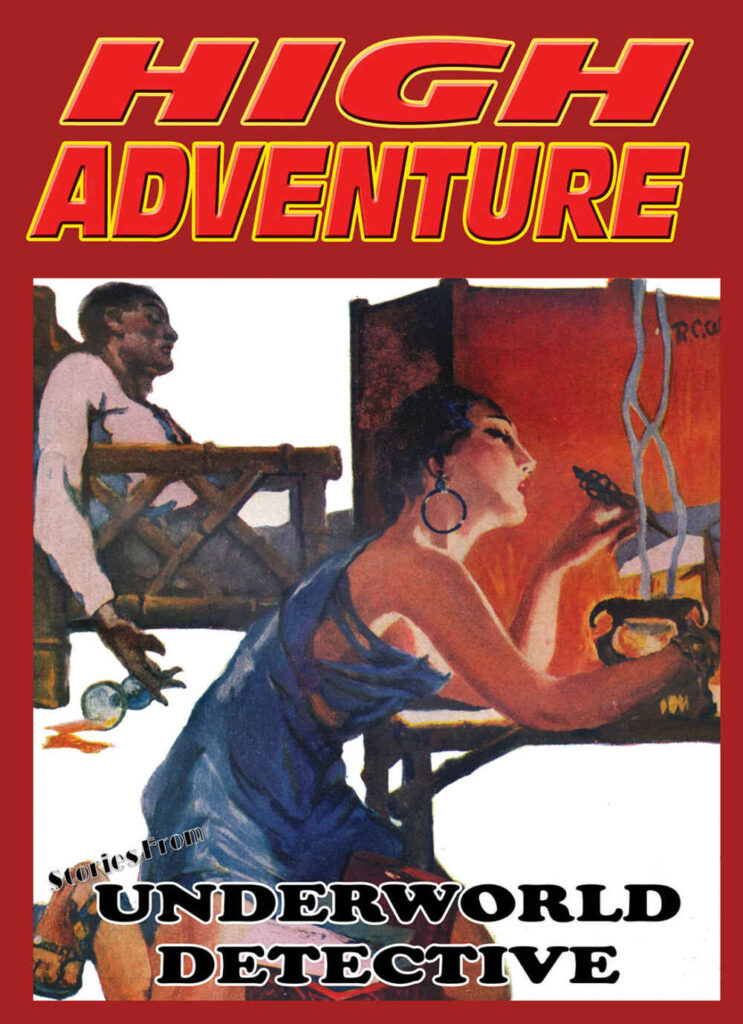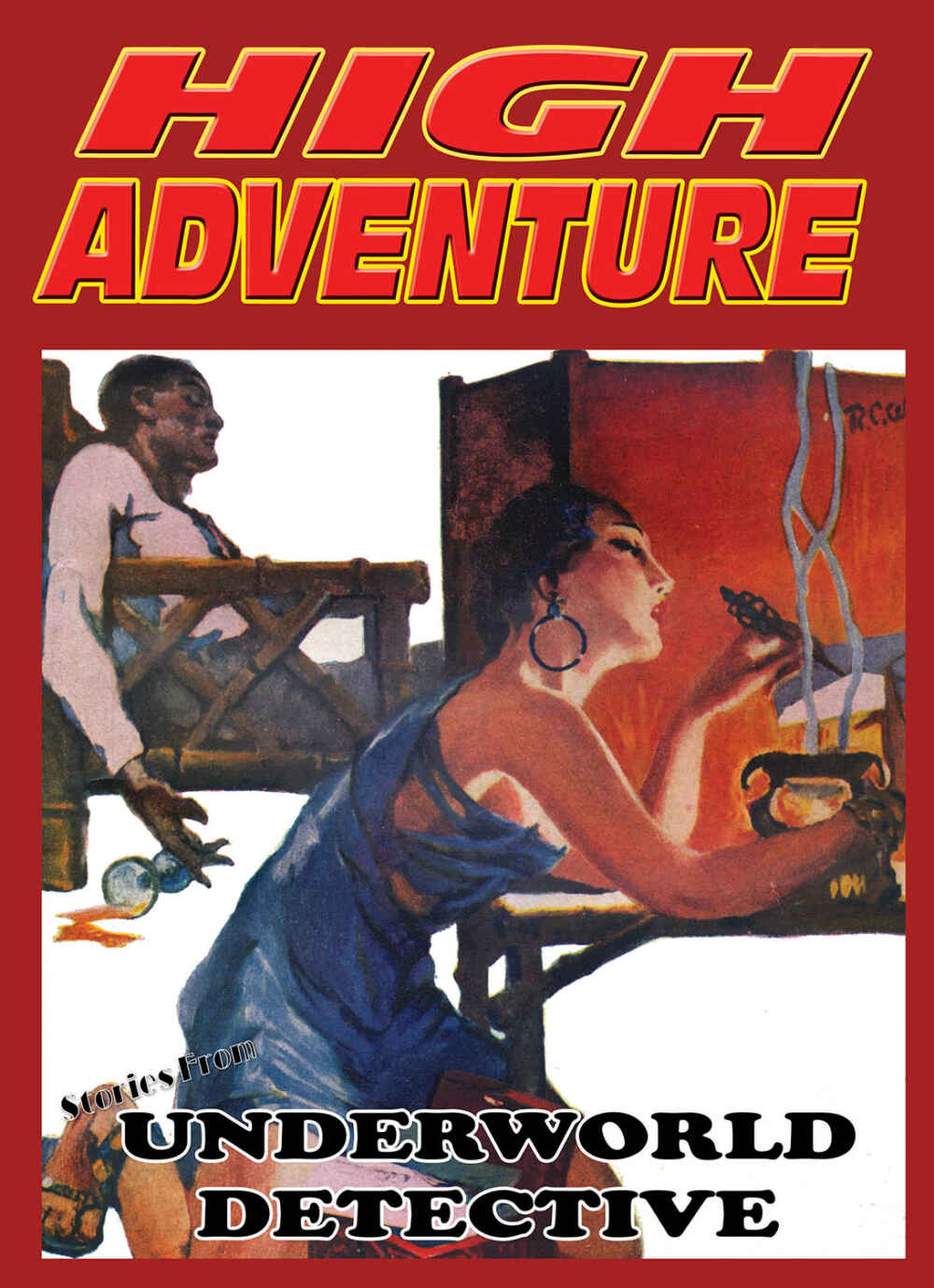Magazine Review: High Adventure #193: Underworld Detective edited by John P. Gunnison
This issue of pulp reprints draws from Underworld Detective, which also published as The Underworld and The Underworld Magazine between 1927 and 1935. It focused on crime action stories, and it appears all the stories reprinted here are from the October 1933 issue. (But the cover is from a different, unidentified issue.) Let’s see what’s between the covers!

“The Brain-Trust Murders” by Ed Lybek leads off with a very pulpy tale. A series of “top men” in their fields vanish, leaving behind notes that make them appear to be suicides. A racketeer who’s something of a brain himself realizes these aren’t suicides, but abductions for a purpose, and he’s going to find out who’s doing it and cut himself in on the grift. Or that’s his plan until he and his top henchman vanish without a trace!
And then the murders began. The police detective protagonist learns that a certain mad scientist may be involved, who had interesting ideas about brain surgery to remove a man’s free will but still leave him capable of thinking. The series of bizarre crimes now going on could be accomplished if one had a selection of geniuses in various fields at one’s beck and call.
The plot is both more complicated and simpler than it appears. A nice touch is that the real villain hadn’t considered having a criminal genius on board until the racketeer “volunteered” himself. A weird touch is that we were supposed to pick up the villain is a Communist, except that no Communist Party has ever used that sigil. This is an excellent start and my favorite story of the issue.
“Circumstantial Evidence” by Allen Stone opens with a funeral. A young immigrant has been shot. Was it his best friend who he’d recently quarreled with? His ex-girlfriend? The gangster’s moll he’d been keeping time with? The gangster or his button man? A dropped glove suggests it’s the ex, but there’s aspects of the case that don’t sit well with the police investigators.
“I’m Taking You” by Cyril J. Conrad has a private eye contracted to find a young man, a millionaire’s son, before dawn. The fellow in question had been caught by his father trying to steal his mother’s jewels, but punishment is not what Dad has in mind. The detective tracks the youth to a gambling den, but tragedy is quick on his heels.
“The Backfire” by Don James Johnston stars Jake “Tricky” Barronstein. He’s pulled off a two-man, five-million dollar robbery, and would probably have gotten away with it if one of the bags of money hadn’t been Federal property and brought in the G-Men. But though they’ve caught Jake, they haven’t been able to locate his accomplice or the money itself. They’d dearly like that money back, and are willing to cut a plea deal, but Tricky isn’t having any.
There’s a weird moment where Jake attributes his refusal to let go of the money to being Jewish (but this is not relevant to the story in any other way) but he’s otherwise the sort of criminal protagonist we’d be rooting for. He’s smart, sassy, doesn’t kill, only steals from rich people, and is generally a sweet guy…even if most of the sweetness is part of his clever escape plan.
This being a pro-law and order story though, his plans come to naught due to a stupid coincidence causing the getaway pilot to put two and two together. In a more modern story there might have been a happy ending for Jake and his partner.
“Melody of Death” by Geo. A. McDonald is one of those stories that really telegraphs the ending. Oh, the mob boss has had a pipe organ installed in his house? And he’s invited his arch-rival to a concert of organ music, along with an assortment of other society types and a police detective? I wonder what the murder instrument will be?
“A Bear for Frails” by David Roberts is at least an interesting title. A police detective tries to solve a jewel story robbery by indulging in double dating. He finally has to rely on a violent taxi driver to help him close the case.
“Bullet Proof” by Wallace R. Bamber closes the issue with a double meaning title. Bullet-resistant materials play a part, and bullets are evidence. The police detective plays dangerous games against a killer with a gimmick. This is also a pretty good story.
Content note: murder, suicide, “the third degree”, cops play fast and loose with legality, period ethnic prejudice and sexism with outdated language used.
Overall, a decent selection of stories, though the first one is head and shoulders above the rest.

